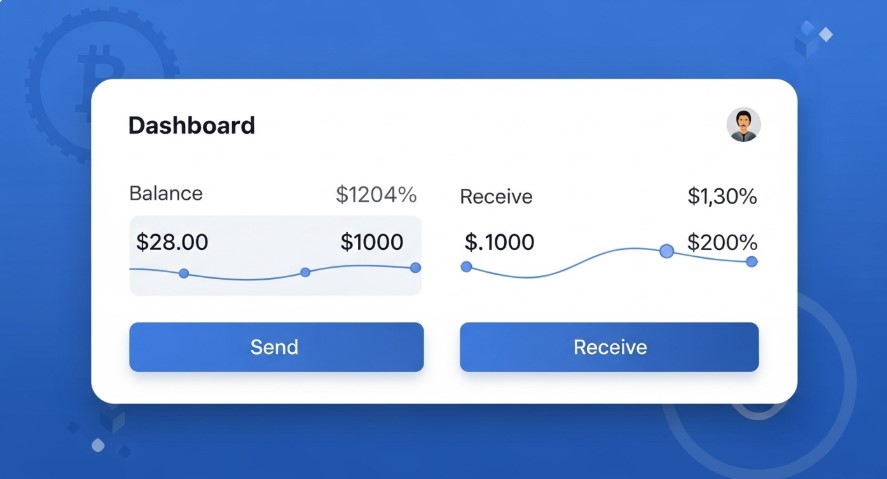Creating your own cryptocurrency can be a rewarding project, whether you want to solve a problem, learn blockchain, or build a digital asset. This guide offers a clear, step-by-step process to help you create a cryptocurrency in 2025. It’s written in simple English, optimized for search engines, and packed with actionable advice to ensure your project stands out.
What is a Cryptocurrency?
A cryptocurrency is a digital currency secured by cryptography. It uses blockchain, a decentralized ledger, to record transactions across many computers. Unlike traditional money, cryptocurrencies like Bitcoin or Ethereum aren’t controlled by banks or governments. They offer transparency and security, making them ideal for various uses.

Why Create Your Own Cryptocurrency?
Here’s why you might want to create a cryptocurrency:
- Customization: Design it for specific uses, like gaming or decentralized apps.
- Learning: Gain hands-on experience with blockchain.
- Value Potential: A popular cryptocurrency could grow in value.
However, it requires time, resources, and effort. With over 22,000 cryptocurrencies in 2025, competition is tough, and success depends on a clear plan and strong promotion.
Understanding the Basics
Before you start, grasp these key concepts:
What is Blockchain?
Blockchain is a decentralized system that records data in “blocks” linked in a chain. It’s secure, transparent, and tamper-proof, forming the backbone of cryptocurrencies.
What is a Consensus Mechanism?
A consensus mechanism ensures a blockchain network agrees on valid transactions. Common types include:
- Proof of Work (PoW): Miners solve math problems to validate transactions, like Bitcoin. It’s secure but energy-heavy.
- Proof of Stake (PoS): Validators stake coins to confirm transactions, like Ethereum. It’s energy-efficient and popular in 2025.
Coins vs. Tokens
- Coins: Have their own blockchain, like Bitcoin.
- Tokens: Built on existing blockchains, like ERC-20 tokens on Ethereum. Tokens are easier for beginners to create.
Methods to Create a Cryptocurrency
You have four main options:
- Build a New Blockchain: Create a blockchain from scratch. This needs advanced coding skills and resources.
- Fork an Existing Blockchain: Modify an existing blockchain’s code, like Bitcoin’s. It’s less complex but still technical.
- Create a Token: Use platforms like Ethereum to make a token with smart contracts. This is the simplest method.
- Hire a Developer: If you lack skills, hire a blockchain expert to build it.
Steps to Create a Cryptocurrency
Follow these steps to create your cryptocurrency:
1. Define Your Purpose
Ask:
- Why am I creating this cryptocurrency?
- Who is my audience?
- What problem does it solve?
A clear goal, like a token for a loyalty program, guides your project.
2. Choose a Consensus Mechanism
Pick a mechanism based on your goals. PoW is secure but energy-intensive, while PoS is efficient and widely used in 2025 due to environmental concerns.
3. Select a Blockchain Platform
For tokens, use platforms like:
- Ethereum: Popular for its developer tools and ecosystem.
- Binance Smart Chain: Offers low fees.
- Solana or Cardano: Known for speed and scalability.
For a new blockchain, code it using Python, C++, or Solidity.
4. Design Nodes and Architecture
Nodes are computers running the blockchain. Decide:
- Are nodes public or private?
- How do they communicate?
- What hardware is needed?
This step applies mainly to new blockchains, not tokens.
5. Integrate APIs
APIs connect your cryptocurrency to wallets or exchanges. Ethereum’s APIs, for example, let tokens work with decentralized apps (dApps).
6. Design the User Interface
Create user-friendly tools like:
- A wallet for storing your cryptocurrency.
- An interface for users to interact with your token or blockchain.
A good interface drives adoption.

7. Ensure Legal Compliance
Regulations vary by country. In the U.S., the SEC may classify some cryptocurrencies as securities, requiring registration. In 2025, the SEC’s Cyber and Emerging Technologies Unit offers clearer token registration guidelines. Key compliance areas:
- Anti-money laundering (AML) laws.
- Know-your-customer (KYC) requirements.
- Securities laws for Initial Coin Offerings (ICOs).
Consult a legal expert to avoid issues.
8. Promote Your Cryptocurrency
Marketing is crucial. Strategies include:
- Community Building: Engage users on Twitter, Discord, or Reddit.
- Content Marketing: Share blogs, videos, or tutorials about your project.
- Fundraising: Launch an ICO or seek investors, ensuring compliance.

Pros and Cons of Creating a Cryptocurrency
| Aspect | Pros | Cons |
|---|---|---|
| Customization | Design for specific needs. | Must stand out in a crowded market. |
| Learning | Learn blockchain hands-on. | Steep learning curve for beginners. |
| Value | Potential to grow in value. | High competition and risk of failure. |
| Cost | Tokens can be cheap to create. | Blockchains are expensive to build. |
| Maintenance | Control features and updates. | Requires ongoing security updates. |
Legal and Regulatory Considerations
The legal landscape is evolving. In 2025, U.S. policies support cryptocurrencies through initiatives like the Strategic Bitcoin Reserve. The SEC’s guidelines help developers register tokens, but compliance is critical. Key points:
- Tokens may be securities, needing SEC registration.
- ICOs face scrutiny to prevent fraud.
- Global regulations vary; China, for example, bans crypto transactions.
Always seek legal advice to comply with local laws.
Marketing and Community Building
A strong community drives success. Tips include:
- Social Media: Use Twitter and Discord to connect with users.
- Partnerships: Work with influencers or crypto projects.
- Transparency: Share regular updates on development.
- Crowdfunding: ICOs or token sales can fund your project but must follow regulations.
Community building is vital in crypto, as it fosters trust and adoption.
Latest Trends in 2025
The crypto space is evolving. Key trends include:
- U.S. Support: The Strategic Bitcoin Reserve boosts crypto adoption.
- Regulatory Clarity: SEC guidelines simplify token registration.
- AI Integration: Projects like Bittensor combine blockchain and AI.
- DeFi and NFTs: Decentralized Finance and Non-Fungible Tokens grow.
- Crypto ETFs: Spot Bitcoin ETFs attract institutional investors.
Tools to Simplify Creation
Tools like Bitbond’s Token Tool let you create tokens in minutes without coding. They support Ethereum-compatible blockchains and require wallets like MetaMask. Be prepared for network fees, like ETH for Ethereum transactions.
Common Questions Answered
How much does it cost?
Tokens can be free to create with tools, but blockchains cost thousands.
Is it legal?
Yes, if you follow local regulations.
What are the risks?
Technical issues, legal challenges, and competition.
Can I create it for free?
Yes, using tools like Bitbond, but fees apply.
How long does it take to create a cryptocurrency?
Tokens can take days; blockchains may take months.
Do I need coding skills?
Not for tokens, but blockchains require coding.
How do I make my crypto popular?
Focus on community, marketing, and a clear use case.
Conclusion
Creating a cryptocurrency in 2025 is achievable with the right plan. Whether you build a blockchain or a token, focus on purpose, compliance, and marketing. Stay updated on trends like AI and regulations to succeed. Start small, learn, and grow your community.

